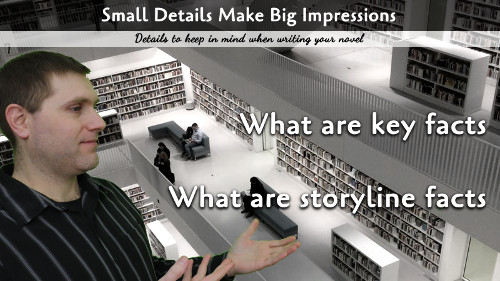Have you ever read a novel that intersected with your knowledge, but got the facts totally wrong? Today we want to talk about avoiding that.
A fictional story may contain elements that suspend reality. The super hero is extra strong or the psychic can see clearly through time at will. But most of the story needs to be based in reality so the rest of the story is believable against a character whom weaves in and out of the adventures. Sometimes, we fail to get those facts right, and that is a putdown to the people who know about such things. Here we want to look at a few examples...and blunders to learn the lesson of precision.
Factual Whoops
I know a lot of edible plants, herbs, survival foods. One such plant that grows here in Pennsylvania is the Garlic Mustard. The leaves of this plant has the same oils, albeit, less concentrated, than garlic. Thus the name Garlic Mustard means it is a leafy green plant in the mustard family with a hint of garlic. I could harvest the herbs from all over my back yard and put them in a salad. In the fury of writing Synaptergy, I mistakenly wrote the plant has yellow flowers as our hero, Mark, watched them go by one day. WHOOPS! Garlic Mustard has white flowers. I pass by hundreds of them on the way to the picnic table where I wrote over half the book. I recognized the error while editing the audiobook, and corrected the goof up in the printed version of the book...but I let the mistake in the audiobook. Hopefully no eastern USA plant specialists are turned off by the error.
While I goofed up this section, I was more prepared for a recurring theme. Mark likes to sit on the back porch with his night time friend, Orion, the constellation. I actually consulted start charts in the FOSS application, Stellarium, to be sure I knew the time of the day the constellation would be out. I also needed to know the orientation of the house, and the porch to be sure everything is correct. If you are unsure of facts, consult someone who knows, at least to confirm your own research.
Storyboard Whoops
A storyboard editor can help you with any holes that appear in your book because of character or story errors. These are trickier to figure out because they are not factual as much as part of the world you are creating in your book. I personally keep a journal handy to keep an eye on the fine details of the people. For each main character in your story, be sure to know a back story, likes and dislikes, important times and dates. These are all important, particularly in a series where you might forget that in book one you said your main character had a brother but by book three, it was a sister.
I personally know birthdays, education, favorites, and other details for my characters, even if that information is not needed at present. I do this so that when I need such information, it is already available. Do these simple steps and you will be sure to avoid factual or other plot holes in your book.


